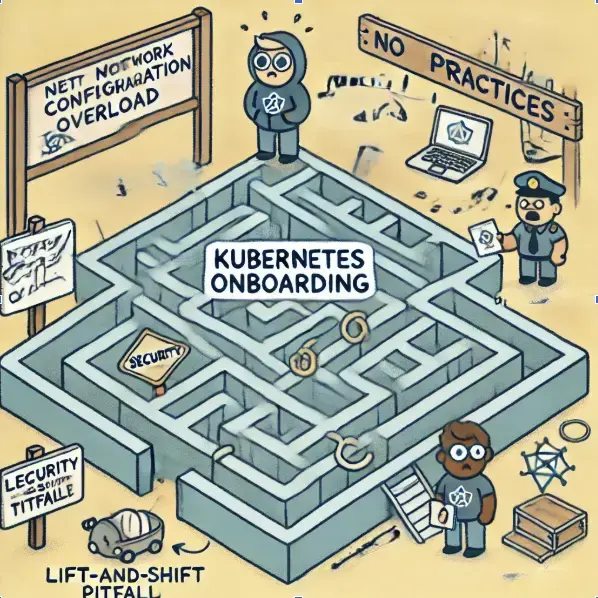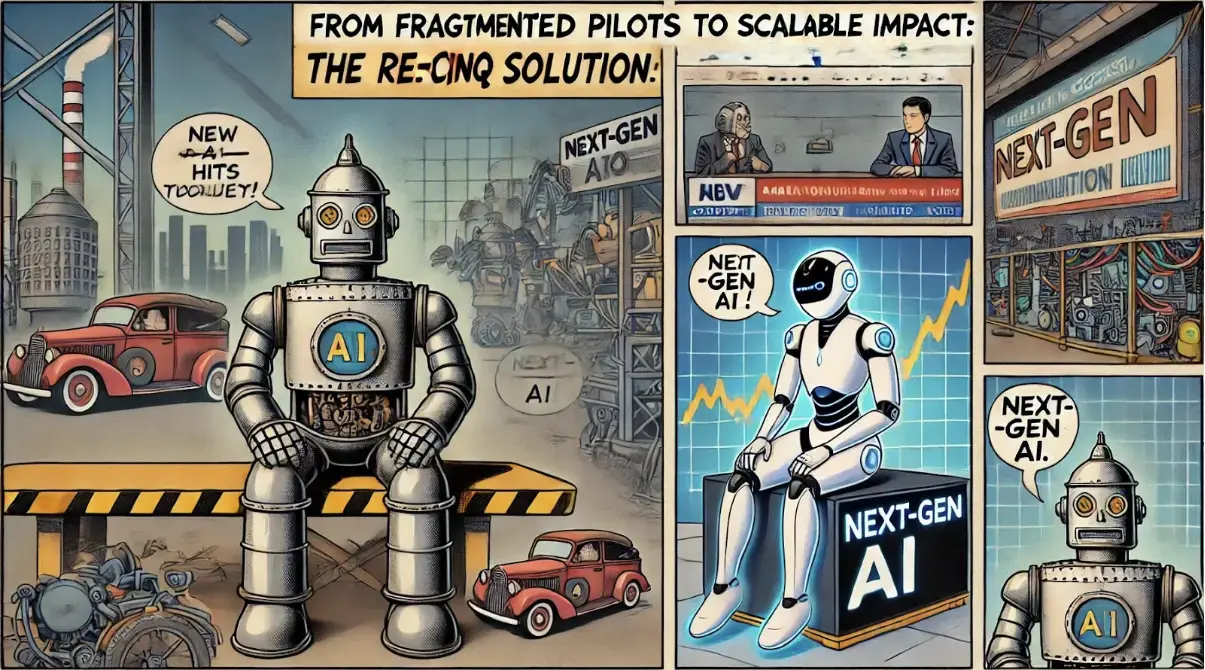Overcoming Key Kubernetes Onboarding Challenges

Recent industry surveys indicate that over 80% of enterprises worldwide now run at least part of their application portfolio in public, private, or hybrid cloud environments. While these platforms promise scalability, flexibility, and performance advantages, the onboarding process itself often proves complex. Organizations grappling with multi-cloud or hybrid migrations routinely face challenges such as network configuration overhead, a lack of baseline metrics, and difficulties in ensuring operational alignment.
Below is a look at common obstacles that emerge during application onboarding and the best practices that address them.
Managing Networking Complexities
Networking pitfalls remain a top-three concern for Kubernetes and container adopters, according to a CNCF report. In multi-cloud or hybrid settings, each environment may have unique routing rules, security requirements, and connectivity protocols. These differences can create:
- Disparate Network Policies: Conflicting rules across regions, often causing inconsistent performance and longer deployment times.
- Latency Issues: Suboptimal routing setups that degrade user experiences or data processing tasks.
- Security Overlaps: IP overlaps, firewall misconfigurations, and manual setup all introduce potential vulnerabilities.
Best Practice: Implement an abstraction layer or centralized management platforms. This approach automates cross-environment tasks, reduces manual errors, and preserves consistent quality. Industry analysts, including Gartner, attribute up to 70% of migration delays to networking bottlenecks, making standardization and automation highly impactful.
Establishing Baseline Metrics and Observability
Proactive monitoring and metric gathering serve as linchpins for successful cloud migration. The State of DevOps Report reveals that teams collecting detailed pre- and post-deployment metrics are three times more likely to identify and address problems early. Key activities include:
- Baseline Performance Measurements: Tracking metrics such as CPU usage, memory consumption, response times, and error rates before onboarding.
- Continuous Observability: Incorporating tools like Prometheus, Grafana, or OpenTelemetry to visualize performance, resource consumption, and usage patterns in near real time.
Best Practice: Compare the post-migration environment against these baselines to confirm that onboarding meets or improves upon previous performance benchmarks. Automated dashboards and alerting systems provide actionable insights, enabling data-driven decisions instead of guesswork.
Evaluating Application Readiness
Many enterprises attempt “lift-and-shift” migrations without thoroughly assessing application architectures or dependencies, resulting in compatibility problems, security gaps, or compliance violations mid-transition. Surveys by IDC and 451 Research indicate that up to 60% of enterprises face setbacks stemming from inadequate readiness checks. Critical elements to review include:
- Dependency Mapping: Libraries, databases, and external services that may have version or configuration constraints.
- Configuration Validation: Verifying environment variables, data access rules, and security profiles.
- Architectural Alignment: Ensuring the application can benefit from containerization, microservices structures, or serverless models.
Best Practice: Conduct a systematic readiness assessment to detect potential issues early. This proactive step often prevents the costly rework that arises when misalignments surface after the onboarding process begins.
Automating the Onboarding Lifecycle
Inefficient onboarding workflows can prolong time-to-market and strain development teams. Research from DevOps Research & Assessment (DORA) highlights that high-performing organizations deploy code multiple times per day, in contrast to lower-performing teams with lengthy manual processes. Streamlining involves:
- CI/CD Pipeline Standardization: Automated build, test, and deployment sequences that apply consistent quality checks.
- Reusable Templates: Generalized configurations that can be adapted for each new service or application, reducing lead time for subsequent migrations.
Best Practice: Implement robust CI/CD practices to accelerate delivery and reduce manual errors. Case studies often report a 50% reduction in onboarding time when standardization and automation are fully adopted.
Continuous Feedback for Ongoing Optimization
Shifting from reactive firefighting to proactive monitoring underpins modern operational excellence. A 2023 study by a leading cloud monitoring firm discovered that organizations with real-time feedback loops identify anomalies up to 75% faster. Continuous feedback techniques include:
- Real-Time Insights: Automated alerts for spikes in latency, resource shortages, or bottlenecks in the data path.
- Iterative Refinement: Regularly updating configurations, adjusting resource allocations, or refining deployment pipelines based on observed metrics and user feedback.
Best Practice: Treat each deployment as a learning opportunity. Improve future onboarding by applying insights from real-time data, user reports, and infrastructure analytics.
Outcomes of a Streamlined Onboarding Approach
Enterprises that systematically address networking, observability, readiness, automation, and feedback loops frequently achieve:
- Faster Deployments: Shorter lead times to production, in some cases by 50% or more.
- Consistent Performance: Onboarding processes that maintain or improve upon established baseline metrics from the moment applications go live.
- Reduced Complexity: Simplified network configurations and robust readiness assessments decrease the burden on engineering and operations teams.
- Enhanced Reliability: Continuous observability yields immediate detection of performance drifts, reducing end-user impact and downtime.
- Scalability: Standardized, automated frameworks make onboarding subsequent services or applications less time-consuming and more predictable.
Conclusion: Building an Efficient Path to Cloud-Native Operations
Organizations that invest in thorough planning, smart automation, and robust observability emerge stronger and more resilient in multi-cloud and hybrid environments. Data from CNCF, DORA, and other industry bodies consistently underscores the importance of structured onboarding tactics, from abstracting networking details to capturing baseline metrics. By proactively mitigating potential pitfalls, teams move beyond ad hoc approaches and gain the agility needed for continuous innovation.
As digital ecosystems grow in complexity, adopting these best practices lays a foundation for efficient, reliable, and scalable cloud-native operations today and into the future.
Unlock Seamless Kubernetes Onboarding with Our Accelerator Workshop
Struggling with complex platform onboarding? Our Onboarding Optimization Accelerator Workshop is designed to help your team overcome integration hurdles, improve observability, and accelerate application deployments all within 10 business days. Schedule a consultation or sign up for the Onboarding Optimization Accelerator Workshop today!
References
-
CNCF Annual Survey 2023 - Cloud Native Computing Foundation’s comprehensive report on container adoption and challenges.
-
IDC Digital Network Readiness Survey - Research on enterprise network transformation and migration readiness.
-
DORA - DevOps Research and Assessment - Leading research program on DevOps practices and organizational performance.








